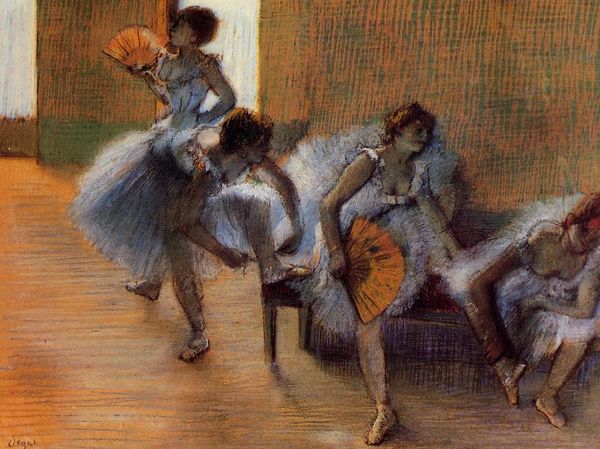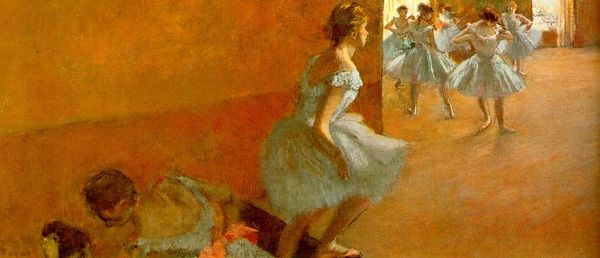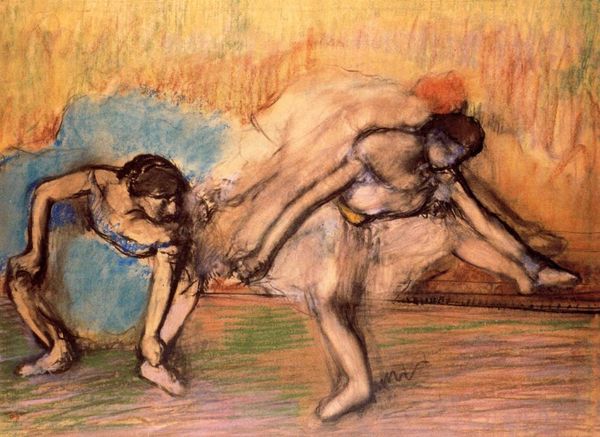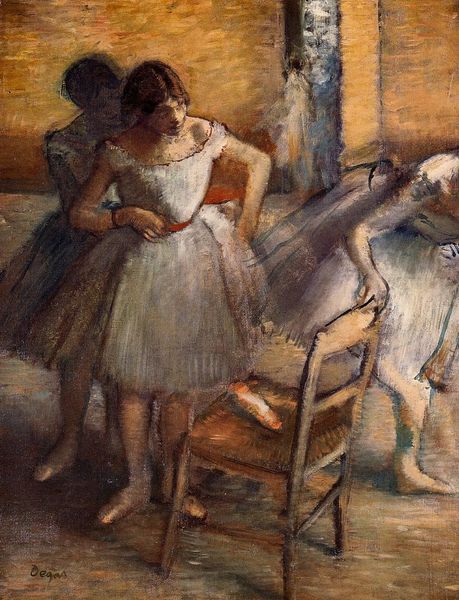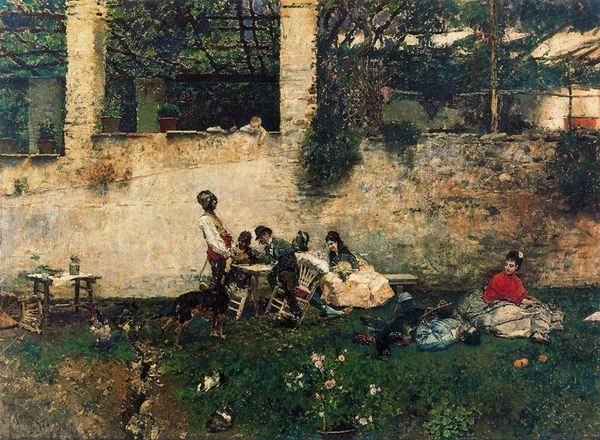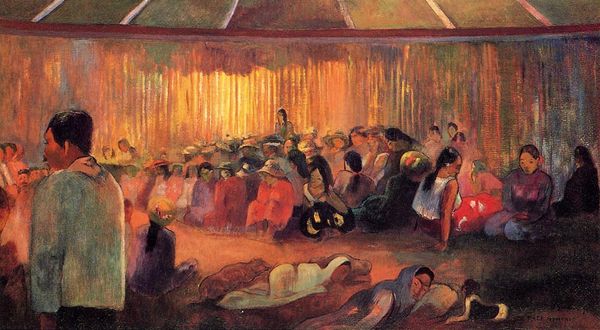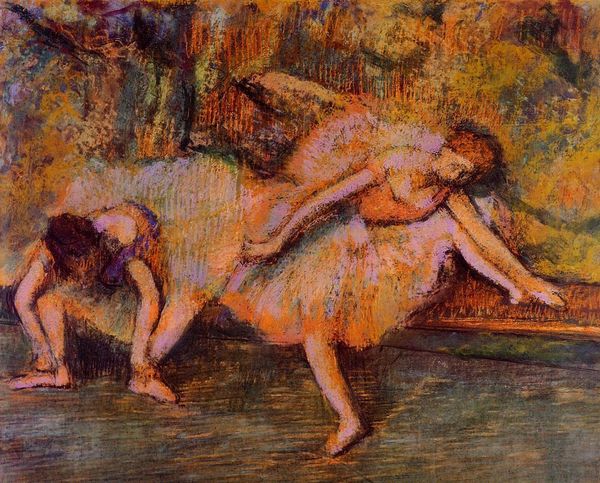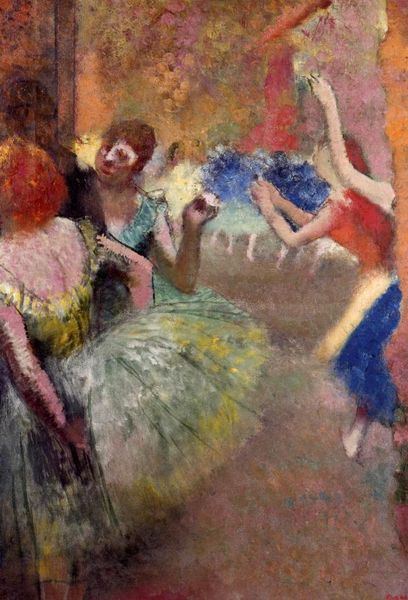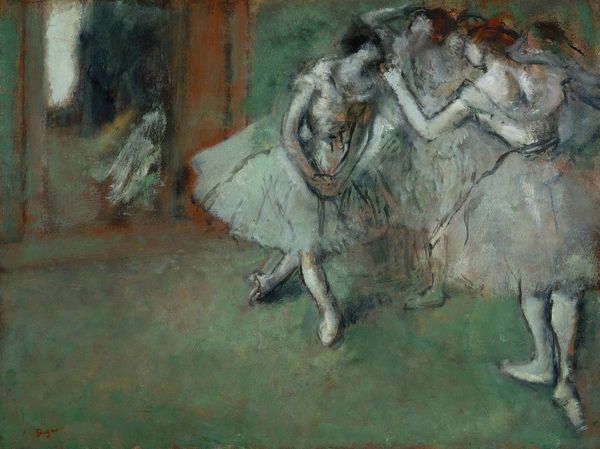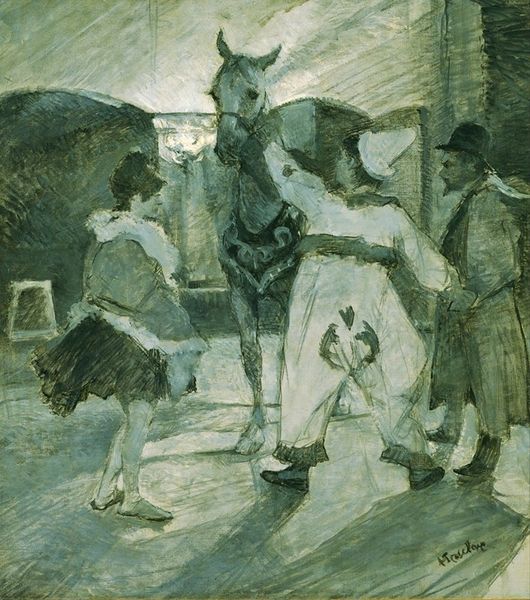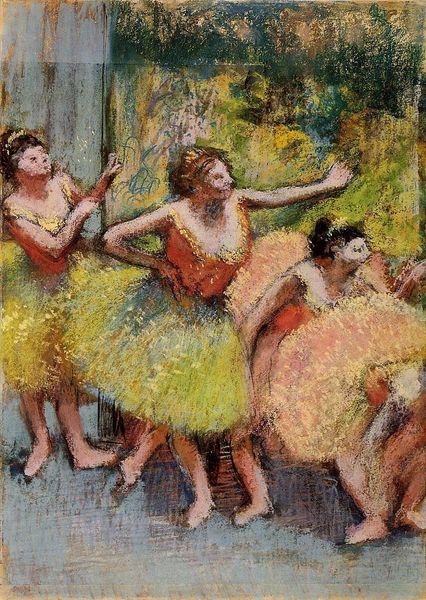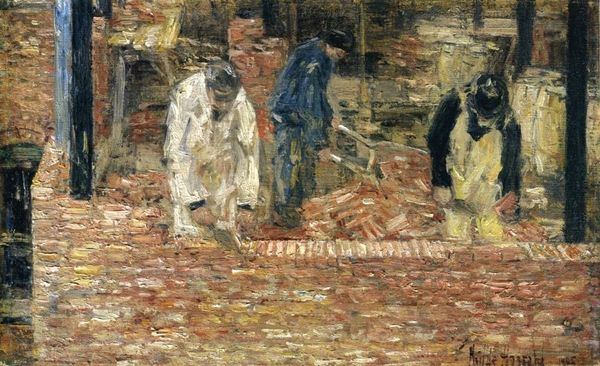
Ballet Rehearsal 1891
0:00
0:00
edgardegas
Yale University Art Gallery (Yale University), New Haven, CT, US
Copyright: Public domain
Curator: This is "Ballet Rehearsal", painted by Edgar Degas in 1891. The artwork, rendered in oil paint, is currently housed at the Yale University Art Gallery. What are your initial thoughts? Editor: My immediate reaction is one of fatigued beauty. There’s an underlying tension, a feeling of both grace and exhaustion rendered with the impressionistic brushstrokes that defined the movement. It's as if the surface shimmers with barely-contained energy. Curator: The ballet holds a unique position in 19th-century cultural imagination. It’s simultaneously associated with idealized femininity, rigorous discipline, and often, a clandestine world of male patronage. Editor: Precisely! Note how Degas fractures perspective—we're both close to the weary dancers in the foreground and privy to the hazy background with dancers still actively in rehearsal. Curator: The image’s power lies in how it deconstructs the idealized image of ballet, showing us not just performance, but also the labor, boredom, and sheer physical strain behind it. See how several dancers attend to aching feet. These women inhabit complex, multilayered identities. Editor: I agree entirely. The muted palette contributes to this. The predominance of pastel colors isn't overtly saccharine or celebratory; it underscores, instead, a fleeting, almost melancholic mood. Look at the layering, the feathery quality of his strokes – almost dissolving before our eyes. Curator: Yes. And consider the symbolism of the mirror. Its presence suggests self-awareness and the critical eye, both internally from each dancer, and as part of a constant external judgment they live under. This ballet scene reflects the performers as objects of spectacle. Editor: It's like gazing at a freeze-frame from a dream. Degas invites the viewer to contemplate the tension between the ephemeral beauty on stage and the stark reality behind the scenes, the beauty of bodies and bodies’ labor. Curator: In contemplating the composition and the painting’s emotional impact, I appreciate the subversion of a single, central narrative by depicting all levels of a production and what we often forget about the labor it requires. Editor: And I am intrigued by the artful juxtaposition between the formal, aesthetic elements of ballet and the honest portrayal of dancers in a moment of human frailty. A fascinating insight.
Comments
No comments
Be the first to comment and join the conversation on the ultimate creative platform.
